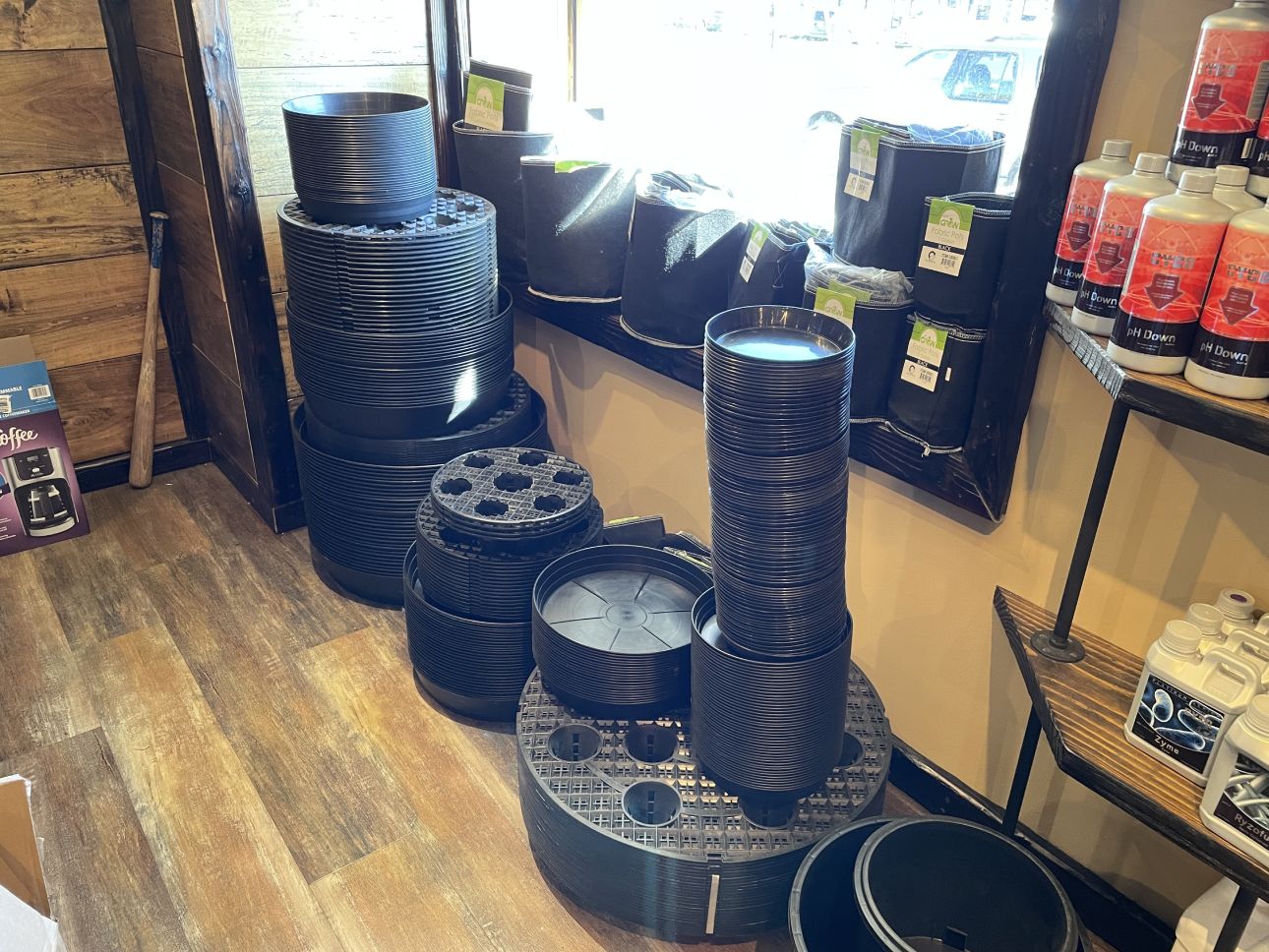Unlocking the Possible of Hydroponics: Recognizing Its Uses and Different Types
Hydroponics, an approach of cultivating plants without dirt, has garnered boosting interest for its possible to revolutionize farming and gardening methods. The precision control over nutrient distribution, water usage, and ecological aspects provides a look right into a future where food manufacturing can be enhanced in various setups. As we browse with the intricate landscape of hydroponic systems and strategies, it comes to be evident that each method holds distinct benefits and restrictions. By untangling the varied uses and kinds of hydroponics, we can uncover a world of possibilities that might reshape exactly how we imagine lasting farming and horticulture techniques.
Advantages of Hydroponic Solutions

One more benefit of hydroponic systems is the capability to expand plants in a smaller space. Hydroponic systems reduce the danger of soil-borne illness and pests, as there is no dirt to harbor these threats.
Common Uses in Farming

Given the efficient water preservation and space-saving benefits of hydroponic systems, it is evident that these ingenious agricultural approaches have found common usages in various fields of agriculture. The controlled setting of hydroponic systems allows year-round cultivation, supplying a regular supply of fresh produce no matter of outside weather condition problems.
Hydroponics is frequently utilized for growing a variety of crops, including leafy greens, tomatoes, cucumbers, strawberries, peppers, and herbs. Additionally, hydroponic systems are made use of in research study and academic setups to research plant farming, development, and nutrition methods.
Exploring Various Hydroponic Techniques
Hydroponic systems provide an array of methods that cater to different plant types and cultivation goals. In addition, the Ebb and Flow system, additionally understood as the Flood and Drain system, intermittently floods the plant origins with nutrient solution, permitting for oxygenation during draining periods. Each of these methods showcases the versatility and efficiency of hydroponic systems in enhancing crop development and return.
Comparing Numerous Hydroponic Systems
Checking out the performance and return enhancement methods in hydroponics leads us to compare various hydroponic systems readily available for crop growing. Each hydroponic system has its unique attributes, advantages, and restrictions, making it essential for growers to select the most ideal system based upon their specific demands and restrictions.
One of the most common hydroponic systems is the nutrient film method (NFT), where a thin film of nutrient option continually flows over the plant roots. In comparison, the deep water society (DWC) system submerges plant roots straight right into the nutrient remedy, giving ample oxygen and nutrients.
One discover here more preferred hydroponic system is the ups and downs (or flood and drain) system, which regularly floodings the plant origins with nutrient remedy prior to draining it. This cyclic process ensures proper aeration for the roots while delivering nutrients successfully. Additionally, the aeroponic system suspends plant roots airborne and hazes them with a nutrient solution, promoting fast growth and high oxygenation degrees. Growers looking for a flexible system that minimizes water use typically choose for aeroponics. By recognizing the distinctions in between these hydroponic systems, farmers can make enlightened choices to optimize plant return and high quality.
Innovations in Hydroponic Innovation
With advancements in hydroponic innovation, the agricultural market is seeing a change in the direction of much more reliable and sustainable cultivation methods. Innovations in hydroponic modern technology are revolutionizing the means plants are expanded by making best use of yields, conserving resources, and lowering environmental impact. One crucial innovation is the advancement of wise hydroponic systems that utilize sensing units and automation to check and adjust environmental conditions such as pH degrees, nutrient focus, and light exposure in real-time. These systems allow exact control over expanding problems, resulting in optimum plant growth and greater plant returns.
Another remarkable innovation is the combination of vertical farming techniques with hydroponic systems, enabling the cultivation of crops in stacked layers. This vertical approach takes full advantage of space application, making it ideal for city environments where land accessibility is restricted - The Indoor Earthworm. Additionally, making use of innovative LED lighting systems customized informative post to specific plant demands has boosted energy efficiency and improved development prices in hydroponic arrangements
Innovations like these are driving the evolution of hydroponics, making it a sustainable and highly eye-catching alternative for contemporary agriculture.
Conclusion
Finally, hydroponics supplies various benefits in farming and has numerous strategies and systems that can be utilized to optimize its possibility. Developments in hydroponic technology proceed to enhance effectiveness and sustainability in food production. By recognizing the uses and various kinds of hydroponic systems, cultivators and farmers can unlock the complete potential of this cutting-edge method of expanding plants without soil.
Furthermore, hydroponic systems permit for better control over nutrient degrees, pH balance, and ecological conditions, leading to much healthier plants and greater returns.
